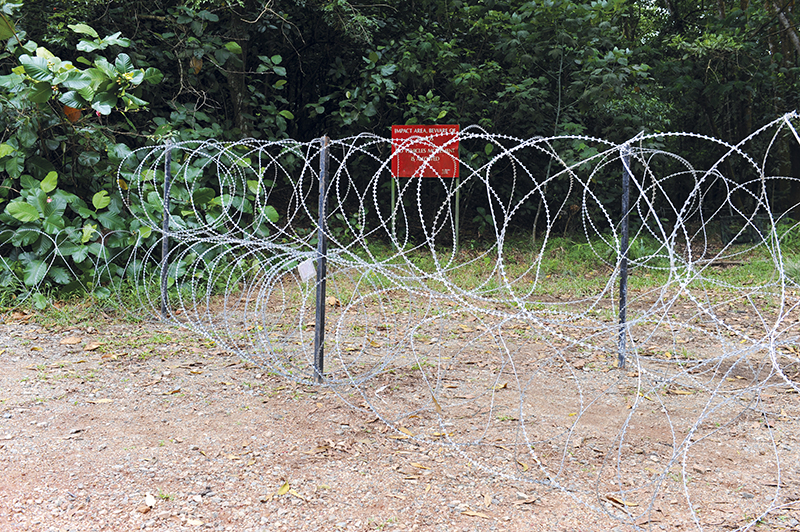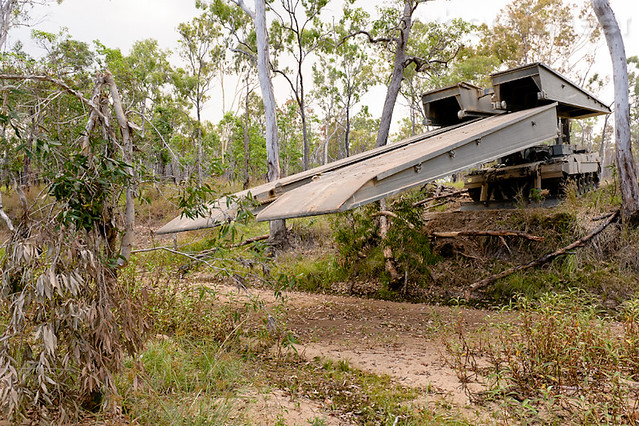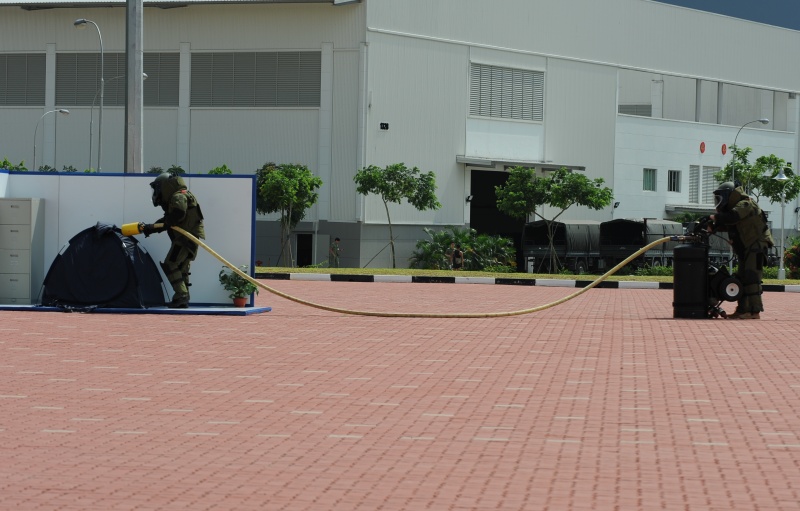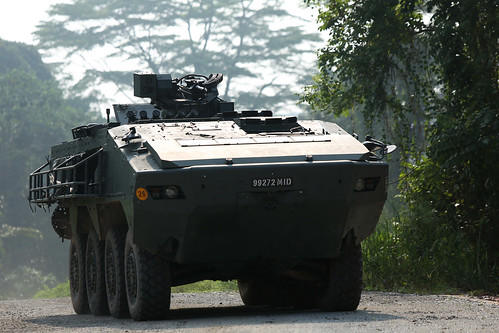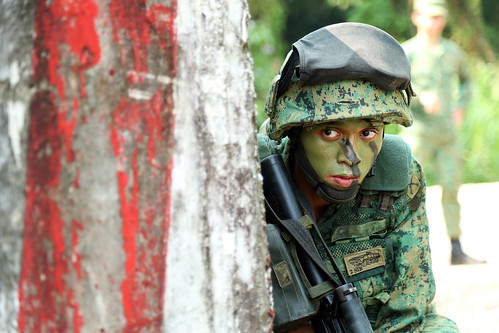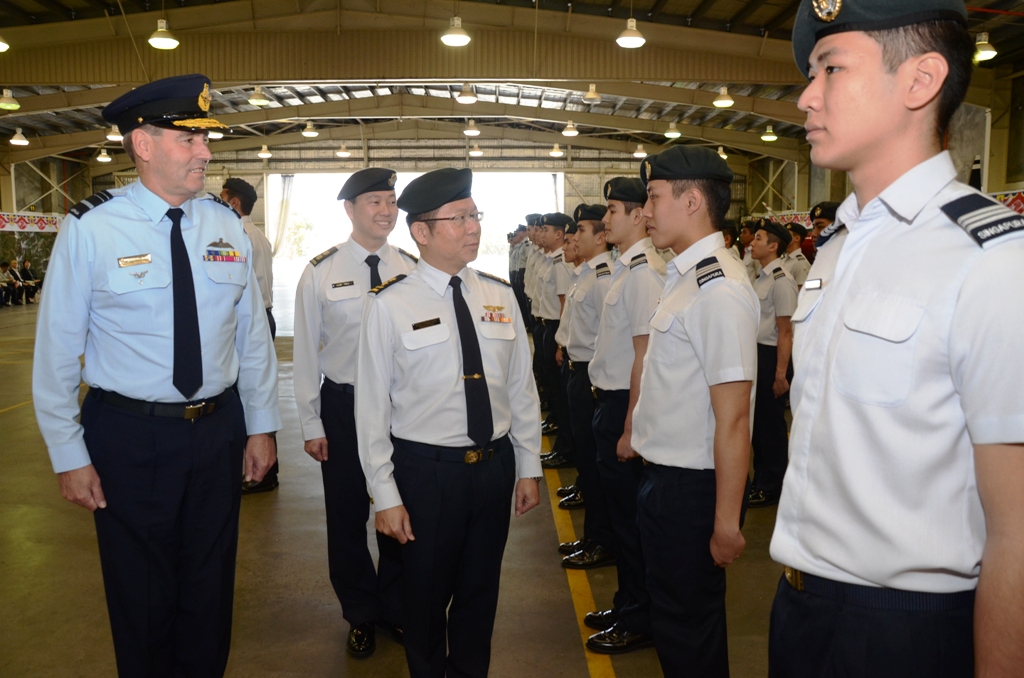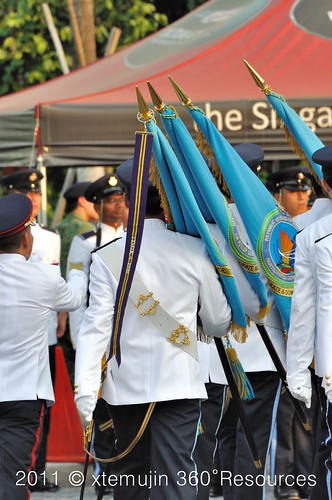- Thread Starter Thread Starter
- #61
Operation Blue Ridge
Below, key leaders from Regional Command (South), Combined Team Uruzgan, and Joint Task Force 633 pose in front of the memorial at Multinational Base with Singapore's Chief of Army Maj. Gen. Ravinder Singh - Tarin Kot. Combined Team Uruzgan was established, following the withdrawal of the Dutch in August 2010, initially under United States command and consisting of Australian, Singaporean, Slovakian and US personnel.

Below, the SAF crest at Tarin Kot.

Singapore Combat Engineers in Oruzgan
A training programme developed for the ANSF on how to spot, identify, avoid and disable roadside IEDs in Oruzgan with Australia and Singapore providing the counter-IED MITs. The Singaporean counter-IED trainers are bomb disposal experts from the Combat Engineer Formation of the SAF. The deployment of Singaporean counter-IED trainers also coincided with an increase in green-on-blue attacks, according to the 2012 figures released by the Institute for the Study of War. From 2007 to 2012, there were 71 documented green-on-blue attacks (two in 2008, five in 2009 and 2010 each, 15 in 2011, and 42 in 2012). According to the Long War Journal's statistics, in 2012, green-on-blue attacks accounted for 15% of coalition deaths (up from 6% of coalition deaths in 2011; and 2% of coalition deaths in 2010). Further, on the 5 October 2013, there was another green-on-blue attack, which is the 11th so far in 2013. This meant that extraordinary precautions had to be taken by the Singaporean trainers, whereby, they had to chamber a round into their personal weapon before coming into contact with the Afghan trainees, and thereafter doing a body search of all Afghan trainees before the start of each class.
Below, a SAF Military Institutional Trainer (MIT) acting as coach to an Afghan trainee looking out for a mock-up IED, as part of his training in Oruzgan.

Below, 1 of 55 SAF MITs deployed in 6 rotations demonstrating a search for IEDs while ANSF troops look on.

Below, a SAF military expert rendering medical aid to a local. One of the Medical Teams deployed was unique in that it included an eight-person Surgical Team with three Operationally Ready NSmen. This team comprised two surgeons, a general practitioner, an anaesthetist, and four other medical personnel and was deployed to a field hospital at the Multinational Base Tarin Kowt (MBTK).

Below, a Surgical Team at work. Besides operating within a challenging environment, the Surgical Team performed its tasks under manpower constraints – the team only had 8 men compared to a typical operating theatre in Singapore which had 10 to 15 personnel.

Reflection by MAJ (NS) Dr Tan Wah Tze.

Below, SAF medical personnel conducting a class with the aid of a US Army translator. Aside from surgical tasks, knowledge was constantly being shared by the SAF surgical team to the local ANA medics assigned to Tarin Kot.

Below, different armies, one mission.

Below, key leaders from Regional Command (South), Combined Team Uruzgan, and Joint Task Force 633 pose in front of the memorial at Multinational Base with Singapore's Chief of Army Maj. Gen. Ravinder Singh - Tarin Kot. Combined Team Uruzgan was established, following the withdrawal of the Dutch in August 2010, initially under United States command and consisting of Australian, Singaporean, Slovakian and US personnel.

Below, the SAF crest at Tarin Kot.

Singapore Combat Engineers in Oruzgan
A training programme developed for the ANSF on how to spot, identify, avoid and disable roadside IEDs in Oruzgan with Australia and Singapore providing the counter-IED MITs. The Singaporean counter-IED trainers are bomb disposal experts from the Combat Engineer Formation of the SAF. The deployment of Singaporean counter-IED trainers also coincided with an increase in green-on-blue attacks, according to the 2012 figures released by the Institute for the Study of War. From 2007 to 2012, there were 71 documented green-on-blue attacks (two in 2008, five in 2009 and 2010 each, 15 in 2011, and 42 in 2012). According to the Long War Journal's statistics, in 2012, green-on-blue attacks accounted for 15% of coalition deaths (up from 6% of coalition deaths in 2011; and 2% of coalition deaths in 2010). Further, on the 5 October 2013, there was another green-on-blue attack, which is the 11th so far in 2013. This meant that extraordinary precautions had to be taken by the Singaporean trainers, whereby, they had to chamber a round into their personal weapon before coming into contact with the Afghan trainees, and thereafter doing a body search of all Afghan trainees before the start of each class.
Below, a SAF Military Institutional Trainer (MIT) acting as coach to an Afghan trainee looking out for a mock-up IED, as part of his training in Oruzgan.

Below, 1 of 55 SAF MITs deployed in 6 rotations demonstrating a search for IEDs while ANSF troops look on.

The SAF Medical Team at Tarin Kot, OruzganShield of Safety at Tarin Kowt

Following a spike in rocket and mortar attacks in Multinational Base Tarin Kowt, the SAF determined our Weapon Locating Radars (WLRs) would provide the critical early warning that could potentially save lives. The WLR Teams’ success in detecting these attacks in their months of deployments led the Netherlands Armed Forces (NAF) to call them the ‘Shield of Safety’. The WLR Teams had to stay alert 24/7 as attacks could occur at any time. Despite the challenges, they were able to track all incoming indirect fires successfully, giving ISAF troops within the base the critical seconds needed to get to safe cover.

Over their 15-month deployment, the WLR Teams detected every single incoming rocket fires within their assigned sectors. As a result, the coalition forces requested for a six-month extension of the SAF’s deployment.

A WLR Team with their Arthur radar. Maintaining a 24-hour watch for months was no mean feat for a small 17-man team. The radar operators worked in pairs and on shifts.

Arthur Hill, home of all the WLR Teams for 15-months, in which they had to provide warning within four seconds of a rocket attack.

Army News, Special Supplement #7, April 2011 -- The WLR Team provided early warning against indirect fire attacks on the Multi-National Base Tarin Kowt (MNBTK). The team displayed vigilance and quick reaction as demonstrated in a particular attack involving six rockets launched into MNBTK. The WLR team was commended by the Commander of the Combined Team Uruzgan, COL Jim Creighton, who said:-
“You guys know that you have four seconds to push the button and everyone's gotta react to what you do. What it says to me is that you guys are the best radar-men, artillery men in the world; what you did was what any professional soldiers would do. Recognise your professionalism and that you can stand toe-to-toe with any military in the world.”
The WLR team's good performance and contributions in Afghanistan was further recognised back home when 24 SA received the Unit Citation Award on 17 January 2011. 1SG Mevinjit clearly remembered 12 December 2010:-
“That day at about 0245 hours, we detected incoming rockets and sounded the alarm. The fifth round destroyed a tent which was earlier occupied by some civilian contractors. It was highly gratifying to know that we had saved their lives.”
Below, a SAF military expert rendering medical aid to a local. One of the Medical Teams deployed was unique in that it included an eight-person Surgical Team with three Operationally Ready NSmen. This team comprised two surgeons, a general practitioner, an anaesthetist, and four other medical personnel and was deployed to a field hospital at the Multinational Base Tarin Kowt (MBTK).

Below, a Surgical Team at work. Besides operating within a challenging environment, the Surgical Team performed its tasks under manpower constraints – the team only had 8 men compared to a typical operating theatre in Singapore which had 10 to 15 personnel.

Reflection by MAJ (NS) Dr Tan Wah Tze.
“In terms of operations, there was no typical day in Afghanistan. Every day was different and challenging. We had to perform more roles, do more things. Besides monitoring the vitals of patients, I had to be the attendant helping the surgeon during a procedure.”

Below, SAF medical personnel conducting a class with the aid of a US Army translator. Aside from surgical tasks, knowledge was constantly being shared by the SAF surgical team to the local ANA medics assigned to Tarin Kot.

Below, different armies, one mission.

Last edited:







































































